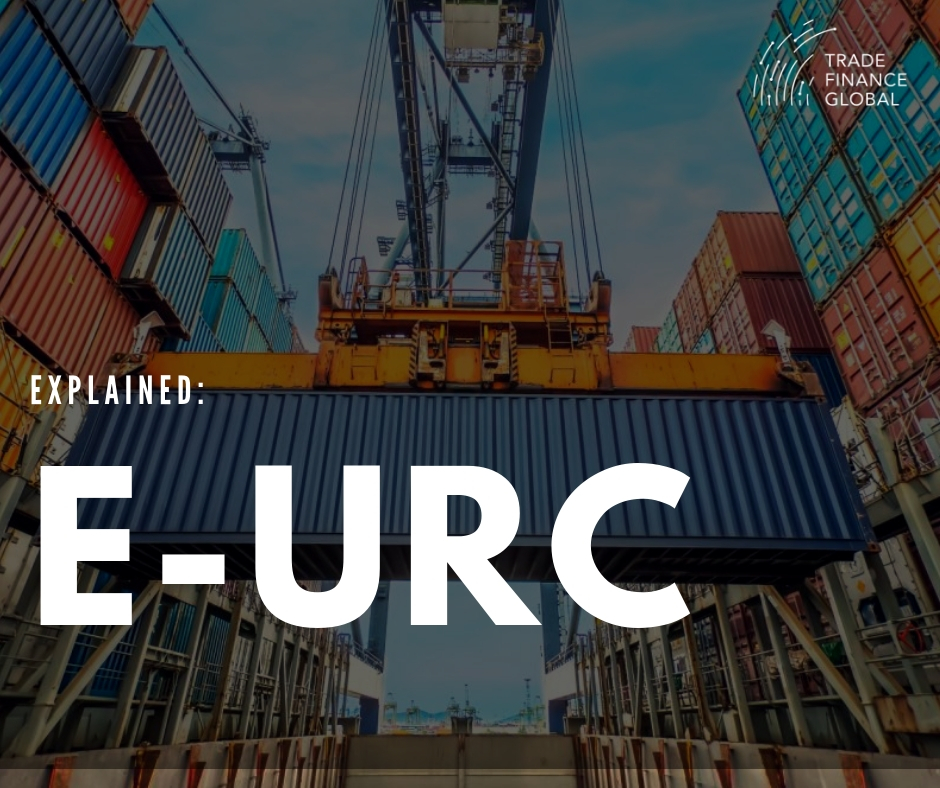Estimated reading time: 7 minutes
The Future of Trade Finance
Yes. A documentary trade payment (DTP) is a direct collection instrument issued on behalf of a buyer to a seller supporting a buyer’s purchase order, and negotiated by a trusted third party to release transportation documents after payment is made.

A documentary trade payment is a trade finance substitute for a commercial bank documentary collection. A documentary trade payment is issued and negotiated under the same UCP guidelines as a documentary letter of credit; except the funds supporting the instrument are available with the buyer instead of with a commercial bank. A documentary trade payment negotiation uses electronic documents under ICC eRules instead of paper.
The cost to the importer for issuing a documentary trade payment is a fraction of the cost of a bank documentary collection or letter of credit. The cost to the exporter is zero because there is no collecting or presenting bank to pay. The documentary trade payment is settled using electronic records via the Internet instead of paper. A documentary trade payment is fast, low cost, secure, totally electronic, and without commercial bank involvement. The documentary trade payment is the future of trade settlement between buyers and sellers using broadband global Internet, video conferencing and eRules.
Article: 2021: Zoom, Starlink, eRules. Is This Year Trade Finance Technology Is Going to Converge?

Documentary trade payment process
A buyer and seller agree on a trade transaction defined by an offered and accepted purchase order for goods and services between the parties. A documentary trade payment is issued as the payment method supporting the purchase order with terms and conditions of payment. The DTP is issued in the format of a MT700 SWIFT message normally used for a documentary letter of credit; however, the availability of funds for the DTP found in paragraph 41D of the MT700 format is with the seller instead of a commercial bank.
Any company that trades with another company. The DTP is not a financial instrument, it is a collection instruction. The DTP is managed under UCP 600 guidelines (the International Chamber of Commerce Uniform Customs and Practice for Documentary Credits) instead of URC 522 guidelines (the International Chamber of Commerce Uniform Rules for Collections).
The documentary trade payment is already in use as of 2020; and was first used to import equipment from China to the USA. It is envisioned that FinTech ecommerce platforms will adopt and expand the use of DTPs, and eventually replace commercial banks as the trusted third party for issue and negotiation. FinTech’s have the ability to add video conferencing and eRules to their platforms to enhance their services. At present, banks have declined to incorporate the Internet or eRules into their trade finance operations since they were first published to the banking industry on 1 April 2002.
Yes.
Listed below are the benefits of using a documentary trade payment:
- Universal guidelines – A DTP follows eUCP 600, International Chamber of Commerce Uniform Customs and Practice for Documentary Credits Supplement for Electronic Presentation (eUCP v2.0) effective 1 July 2019.
- One standard – A DTP replaces URC 522 ICC Uniform Rules for Collections with UCP600 ICC Uniform Customs and Practice for Documentary Credits guidelines.
- A DTP is issued and negotiated by Internet ecommerce platforms.
- A DTP uses the universal MT700 format for data fields and nomenclature (Society for Worldwide Interbank Financial Telecommunication).
- The Seller’s (beneficiary) funds are available with the buyer (applicant) in MT700 paragraph 41D.
- A DTP is completely Internet based using electronic records in PDF format using ICC eRules under UCP 600 version 2.0 (no paper).
- A DTP is payable to the seller within five days or less (UCP 600, Article 14.b).
- A DTP has a low flat rate cost to the importer; not a percentage of the transaction value.
- A DTP has no cost to the exporter.
- A DTP supports Internet ecommerce platforms utilizing video (Zoom), global Internet (Starlink) and eRules (ICC eUCP600 version 2.0).
Partial shipments paid fast in days instead of weeks?
Transactions with a large number of containers can be divided into smaller partial shipments requiring smaller cash flow outlays. For example, 100 CTNs with a value of $1,000,000 can be divided into ten weekly shipments of $100,000 each. Since the payment time for electronic records is less than 5 days, the seller can receive payment for the first shipment before the second shipment is due to be shipped. Indeed, this is probably the most important benefit that the Internet brings to trade transactions using ICC eRules.
Third-Party Escrow
No. The documentary trade payment is defined as funds available with the buyer. However, a documentary trade credit (DTC) is defined as funds available in escrow under contract with a commercial finance company that are allocated to the transaction by the buyer to the seller.

The need for a documentary trade payment
Trade finance reality. Only ten percent (10.8 %) of world trade is supported by a commercial bank’s promise to honor a presentation of negotiable documents made under UCP 600 documentary letter of credit guidelines (18.0 % LC transactions of world trade x 63.0 % non-discrepant presentations = 10.8%). The 89.2% balance of non LC trade transactions worldwide are a mix of documentary collections and open accounts. Open account transactions are simply collections with usance terms; payable after the goods are delivered to the buyer. 90% of trade transactions are paid by buyers as collections after shipment and/or delivery. Advance payment, although desirable, is not considered a payment method since there is no exchange of title for money, which still must happen after shipment.
All collection shipments are based on a puzzlement. Do I trust the buyer to send the money after I ship the goods and title documents? Or, do I send the title documents after the buyer sends the money. The documentary trade payment instrument adds a third party negotiation function used with documentary letters of credit and defined in the UCP guidelines to protect both buyer and seller.
The documentary trade payment uses UCP 600 (letter of credit guidelines) to add the negotiation function to the collection process. These guidelines are universally accepted in all 200 trading countries and have become Internet compatible with the publication of UCP 600 Supplement 2.0 providing for electronic records to be equivalent with paper. The UCP has never been a “bank regulation”; it was first published in 1933 and adopted by the banking industry as universal guidelines for managing documentary letters of credit.
Summary and Conclusions
The documentary trade payment (DTP) can be used for 90% of world trade not supported with a credit instrument. Coming, is the disenfranchisement of commercial banks as intermediaries to international buyers and sellers.
Buyers and sellers will manage their own trade finance credit and collection functions. By the end of 2021 the reality will be global broadband Internet (Starlink/12,000 satellites), global video (Zoom/500 million users), global trade finance internet guidelines (ICC eRules for credits and collections), and global non-bank ecommerce platforms (100s).
These technologies will provide global capability for import and export companies to issue, escrow, present, negotiate and transact documentary trade payments (collections) and documentary trade credits (credits) without banks. Trading companies already have ready access to the same International Chamber of Commerce eRules UCP600v2.0 for credits and URC522v1.0 for collections as any bank.
These video, eRules and ePlatform technologies were available in 2019, but will permeate the global by the end of 2021 with the advent of universal broadband. Presently, world trade is unaware that this capability is happening; but this will change as it did with penicillin. At first slowly; then rapidly; and then totally.


































